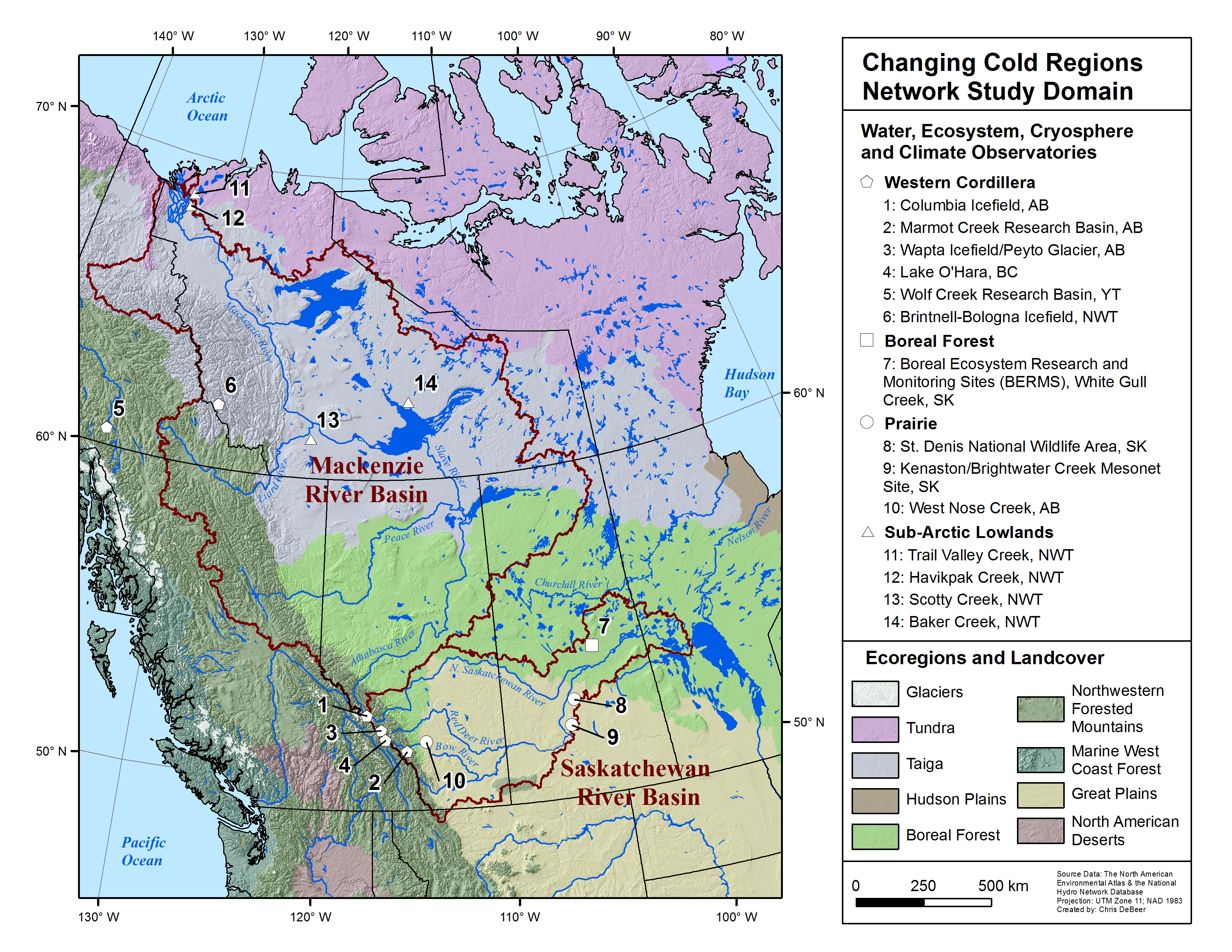Water, Ecosystem, Cryosphere and Climate (WECC) Observatories

Through its
Information on the data available and the content archived within the CCRN's database is available through http://giws.usask.ca/meta. Access to select datasets is available through http://giws.usask.ca/KistersWeb (Login name: public; Password: public), and further information on data can be found at http://www.ccrnetwork.ca/outputs/data.
We have organized a special issue of the journal Earth System Science Data where we have published data from many WECC sites, and where the interested reader can find more details about particular sites. Please see https://www.earth-syst-sci-data.net/special_issue901.html.
- Columbia Icefield, AB
- Marmot Creek Research Basin, AB
- Wapta Icefield / Peyto Glacier, AB
- Lake O'Hara, BC
- Wolf Creek Research Basin, YT
- Brintnell-Bologna Icefield, NWT
- Boreal Ecosystem Research and Monitoring Sites (BERMS), White Gull Creek, SK
- St. Denis National Wildlife Area, SK
- Kenaston / Brightwater Creek Mesonet Site, SK
- West Nose Creek, AB
- Trail Valley Creek, NWT
- Havikpak Creek, NWT
- Scotty Creek, NWT
- Baker Creek, NWT
Study Domain
The Western Cordillera includes the southern
WECC Observatories
The western boreal forest study area of CCRN traverses the latitudinal and altitudinal extents of boreal forests in Canada and the range of permafrost conditions across which these forests exist (
WECC Observatories
Includes the upland St. Denis National Wildlife Area (SDNWA; EC) of internally drained wetlands, cultivated fields and pasture; the semi-arid West Nose Creek groundwater recharge area; and the Kenaston/Brightwater Creek mesonet site of lowland level pasture and cultivated grassland. A soil and groundwater observatory along with flux towers is established here in collaboration with the Canadian Space Agency (CSA) and NASA.
WECC Observatories
Key study sites are located at the northern (Trail Valley and Havikpak Creeks) and southern (Scotty Creek) margins of the Taiga Plains ecoregion along the Mackenzie Valley. In addition, between these end-member
WECC Observatories
